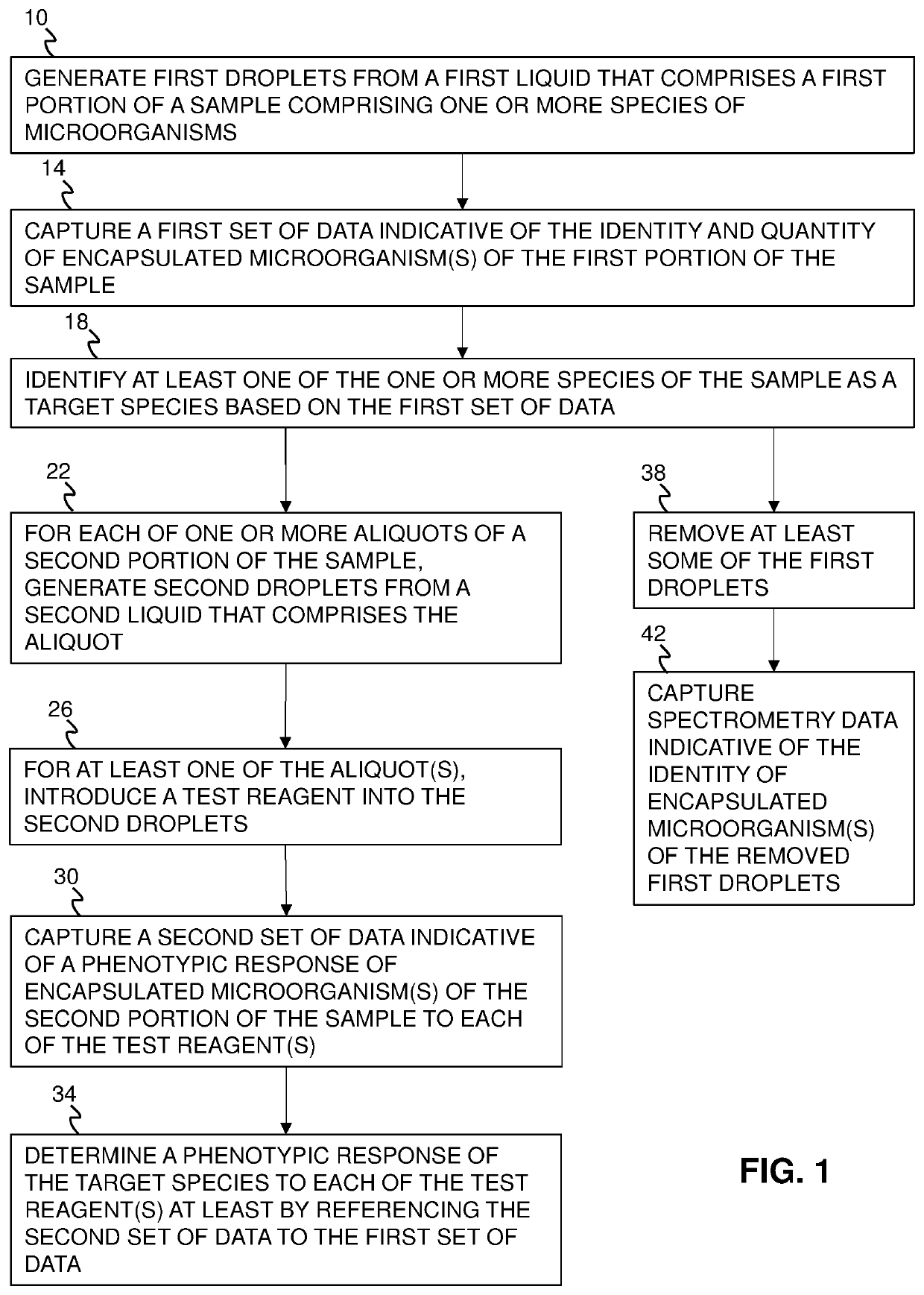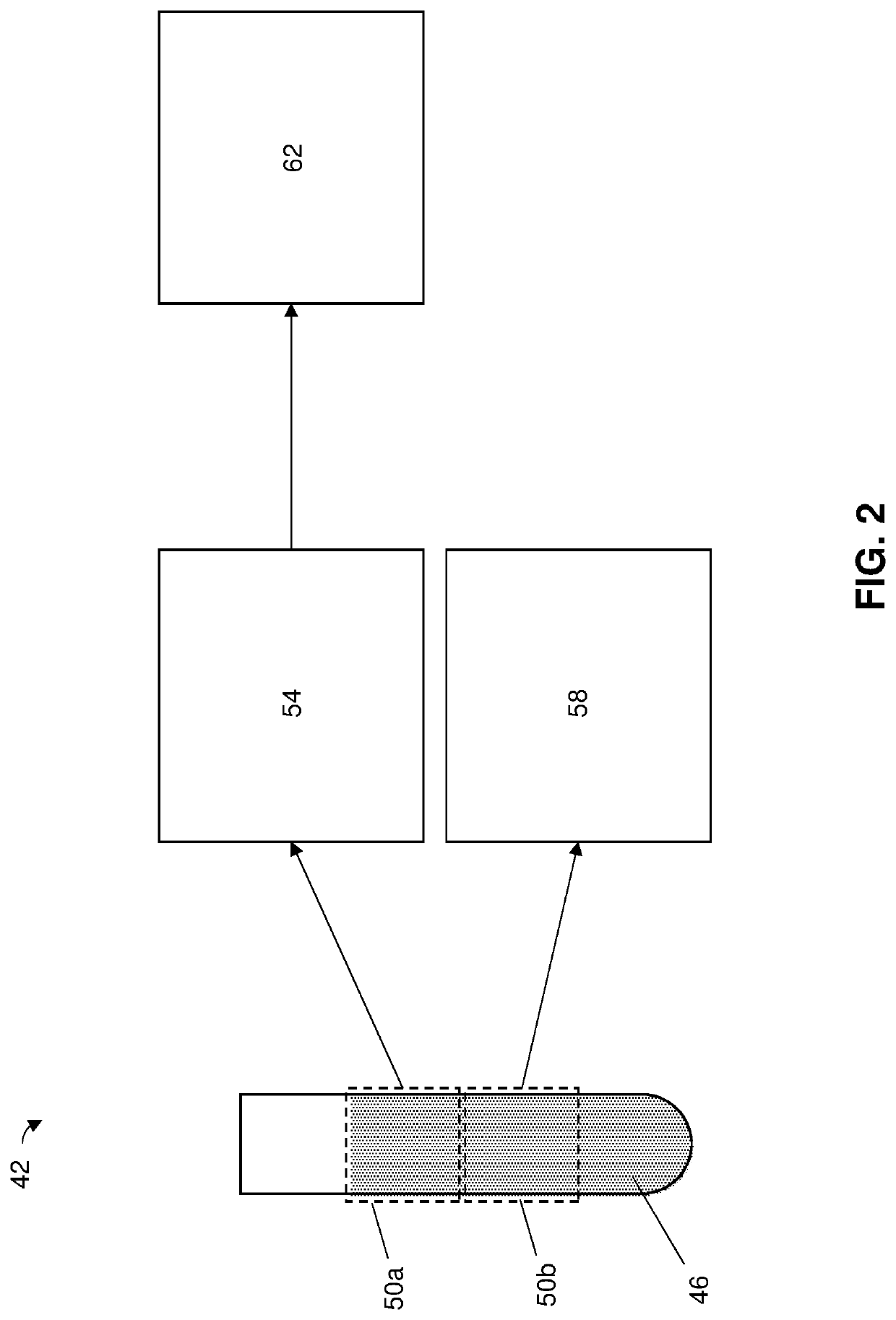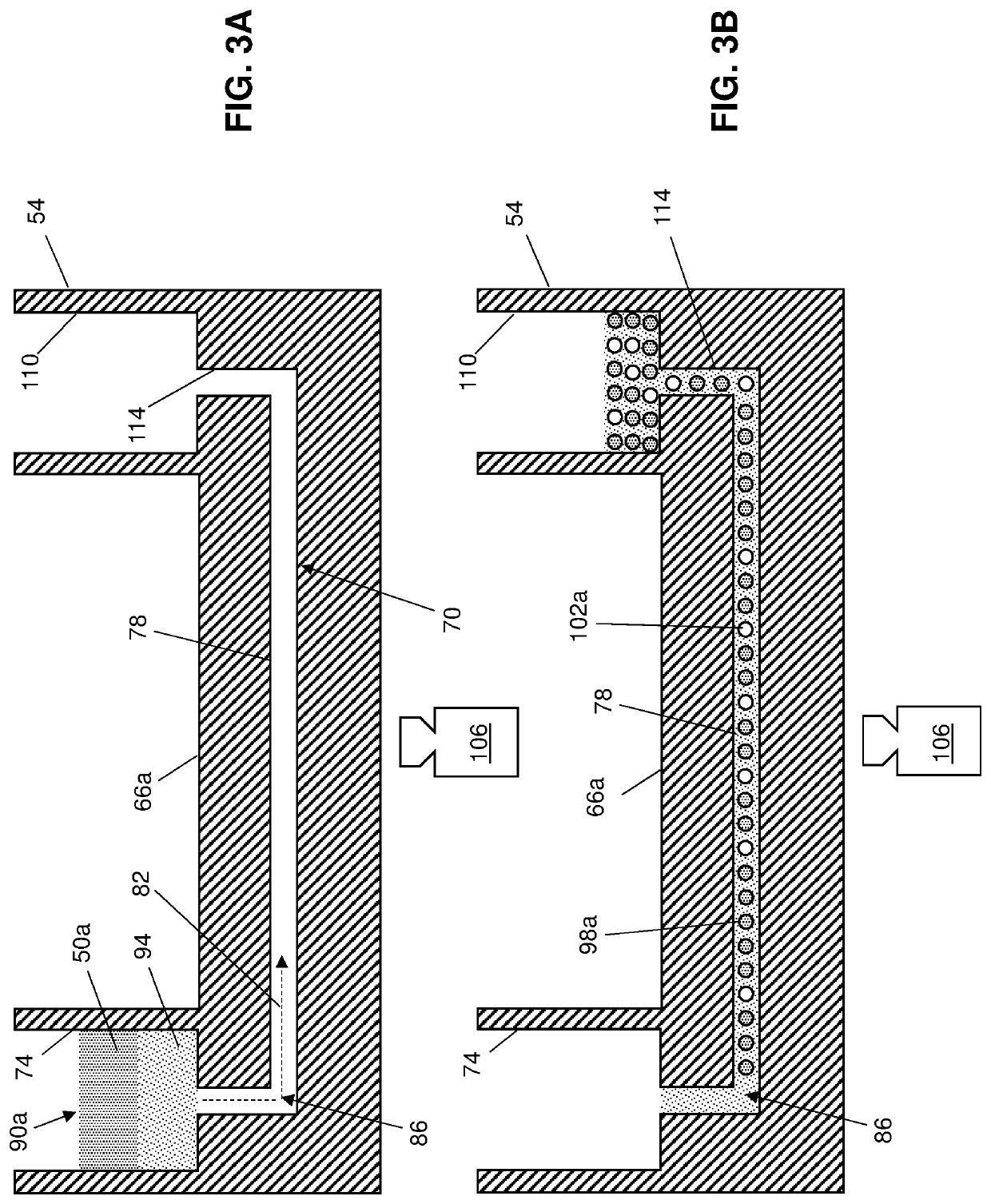Methods for Screening and Subsequent Processing of Samples Taken from Non-Sterile Sites
a technology of non-sterile sites and screening methods, applied in the field of identification and phenotypic analysis of microorganisms, to achieve the effects of simple loading, high concentration of encapsulated microorganisms, and rapid, cost-effective and efficient processing
- Summary
- Abstract
- Description
- Claims
- Application Information
AI Technical Summary
Benefits of technology
Problems solved by technology
Method used
Image
Examples
Embodiment Construction
[0053]FIG. 1 illustrates some of the present methods of analyzing a sample (e.g., 46) and FIG. 2 is a schematic of a system 42 that can be used to perform some of those methods. While some of the present methods are described with reference to system 42 and illustrative devices thereof (e.g., 54, 58, and 62), system 10 and those devices are not limiting on the present methods, which can be performed using any suitable system.
[0054]The sample can comprise one or more—optionally two or more—species of microorganisms, such as one or more species of bacteria and / or fungi, and can be taken from a non-sterile site of a patient. For example, the sample can include urine, sputum, skin, soft tissue, material collected from bronchoalveolar lavage (BAL), material collected from endotracheal aspiration (ETA), and / or the like, and can be an aqueous liquid. Because the sample may be taken from a non-sterile site, it may include both pathogenic and commensal microorganisms. As described in further...
PUM
| Property | Measurement | Unit |
|---|---|---|
| specific gravity | aaaaa | aaaaa |
| pore size | aaaaa | aaaaa |
| pore size | aaaaa | aaaaa |
Abstract
Description
Claims
Application Information
 Login to View More
Login to View More - R&D
- Intellectual Property
- Life Sciences
- Materials
- Tech Scout
- Unparalleled Data Quality
- Higher Quality Content
- 60% Fewer Hallucinations
Browse by: Latest US Patents, China's latest patents, Technical Efficacy Thesaurus, Application Domain, Technology Topic, Popular Technical Reports.
© 2025 PatSnap. All rights reserved.Legal|Privacy policy|Modern Slavery Act Transparency Statement|Sitemap|About US| Contact US: help@patsnap.com



